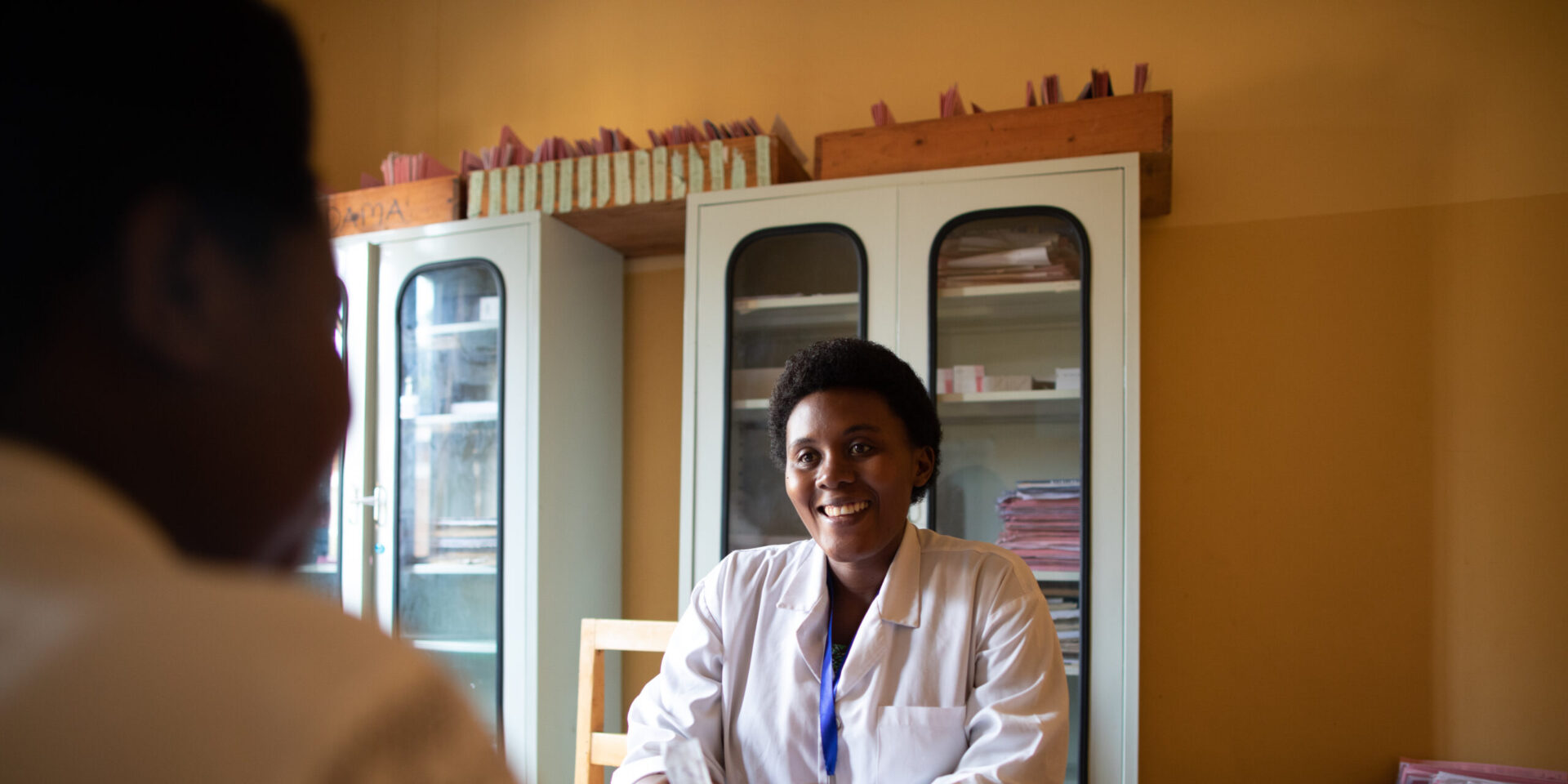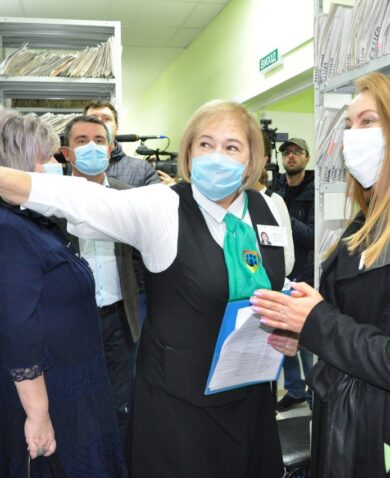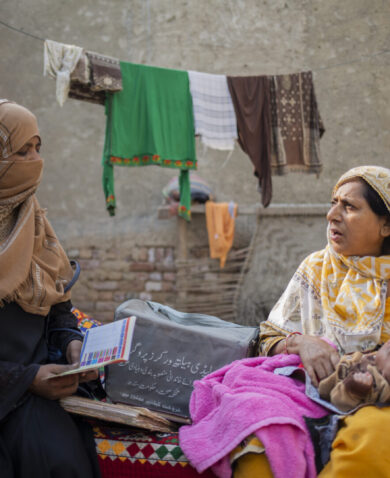
3 Questions with Bruno Bouchet on Health Systems Strengthening
August 2, 2021 | 5 Minute ReadChemonics’ senior director for global health talks about his background, why strengthening health systems is so critical, and how quality improvement can enhance health outcomes and lead to better health for all.
1. What draws you to work in global health? 
After completing medical school in France, I spent 16 months as a clinician at a hospital in French Guyana, where I took care of patients with tropical diseases (such as malaria, amebiasis, and tuberculosis) and I decided to specialize in tropical medicine in Antwerp, Belgium. Afterwards, I went to Chad with France’s Ministry of Foreign Affairs and International Development to work on their national sleeping sickness control program and district health systems for four years. I decided that I needed to specialize in international health, and I completed an MPH at the Johns Hopkins School of Public Health. This is where I discovered what I thought I had been missing in my work: systems thinking and methodologies to improve quality of healthcare. Everything else flowed from there: I spent five years with University Research Co. on the USAID-funded Quality Assurance Project, three years in Uzbekistan with John Snow, Inc. working on health sector reform in Central Asia, two years with the World Health Organization focused on primary health care in Europe, and most recently 14 years with FHI 360 leading health systems strengthening (HSS) and quality improvement.
I joined Chemonics’ Global Health Division in May 2021 to lead the development of its capacity in HSS. This is a broad technical area that addresses essential functions of the health system to contribute to achieving the vision of universal health coverage and the health-related Sustainable Development Goals. The health system is the foundation of many public health programs and its performance directly affects their successes and their sustainability, hence the importance of integrating systems thinking in all we do. I am particularly interested in providing guidance and mentorship to grow this capacity within our staff and programs and to generate new knowledge through innovations that contribute to the science of improving complex health systems in low- and middle-income countries.
2. COVID-19 has pushed the limits of many health systems, particularly in low- and middle-income countries. Which factors made some countries’ responses more effective than others, and how can we apply those strengths to improve weaker health systems?
This is a very complex question that I think is still being debated and studied, even 18 months after the pandemic was officially declared. Every country and country health system is unique. That being said, I think three essential factors are affecting the effectiveness of the response – but there are many others.
The first one is about communication: it is important for decision-makers at all levels of government to adopt an approach based on facts and evidence. Then, they must adapt their messages to the entire population as knowledge develops about the virus, how it is transmitted, and how it can be controlled based on previous and similar pandemics and epidemics. When communicating, trust the science, be transparent about what is known and what is unknown, and avoid sending confusing messages. This is extremely challenging to do in this era of fast-spreading misinformation through social networks while still respecting fundamental rights of expression. The virus has no political ideology, and that needs to be reinforced in all communication and this must reach all levels of the health system, be context-specific, inclusive, targeted, and adapted to the various groups within each country using multiple channels.
The second factor is adopting an integrated and multi-sectoral approach to health services delivery and pandemic response. This includes the presence of a functional, well integrated health information system that tracks in real-time the emergence, spread, and evolution of the disease and serves as the basis to learn about what preventive measures work while new treatments and vaccines are being developed. A functional health information system allows countries to prevent, detect, and respond to pandemic threats in a timely and effective manner.
The third factor is the immediacy with which country leaders coordinate, collaborate, and enact measures that we know are helpful to limit the spread of this type of virus in compliance with international health regulations and treaties. Some countries (and populations) have been quicker to accept and implement new behaviors and strategies than others. For example, limiting the introduction of a virus into a country by closing borders may be easier for island nations than others. However, nearly every country is facing the issue of acceptance and compliance with certain measures – such as wearing masks – that were perceived subjectively despite robust scientific evidence.
These points are not new or specific to COVID-19, but they re-emphasize three key messages when it comes to health systems and their resilience: 1) no country’s health system, whether low- or high-income, was prepared for a pandemic of this magnitude, even if some of them did better than others; 2) all health systems are connected through a “global” health system, so the weakness of one will affect all others, hence the importance of global partnerships; and 3) collaboration between public and private sectors is essential to help mobilize and coordinate all available resources. The accelerated development of vaccines and treatments is a success story, but it needs to benefit all countries and people. In this regard, an international organization such as Chemonics, with its global reach and experience, is well positioned to contribute to an emergency response while strengthening the health systems in the longer term.
3. Can you share an example of a successful quality improvement (QI) initiative you helped implement? What made it such a success?
I define success as achieving results and generating learning from a structured improvement effort about how the health system “behaves” in reaction to changes. My experience with the Senegal QI initiative aimed at improving the system of care for tuberculosis patients was one of the most rewarding. The initiative was set up in 2008 as a demonstration project in Mbao district to achieve the detection rate and the cure rate set by the Ministry of Health. Teams of providers, managers, and community groups were trained for the first time in a modern QI model built on systems thinking that broadened their more traditional approach of addressing each performance issue with more “training and supervision.” We used the QI collaborative model to design and manage the effort.
The results – increased detection rates, treatment rates, follow-up, and cure rates – were achieved through many changes in the processes of care under the control of the district and care teams and required no additional resources. We documented this QI story through a formal qualitative evaluation and identified the main factors of success being: 1) engagement of leaders at all levels who are committed to question the status quo and try something new; 2) the empowerment of care teams to generate ideas of changes and test them through the application of a scientific method (the improvement model); 3) a system of coaching to support the service providers and make them work as “one team” going through the steps of the QI model; 4) a manageable measurement system that tracks indicators of system performance not usually integrated into the health information system; and 5) regular interactions between teams through a learning platform where they can exchange progress, challenges, and lessons learned so that solutions are customized to their local health system.
As a result of this demonstration, the Ministry of Health asked the project to support the spread of these improvements to five other districts of the Dakar medical region and to start a similar QI effort on HIV/AIDS systems of care in the south. This was the first time that modern QI methods were introduced in the Senegalese health system, and it broadened the perspective of the Ministry of Health about the power of applying quality management principles into their programs. Quality Improvement models are an essential component of evidence-based strategies to strengthen a health system and sustain the results of vertical disease control programs through their integration into the broader health system.
Posts on the blog represent the views of the authors and do not necessarily represent the views of Chemonics.
Banner image caption: Doctor provides counseling service to a patient in Rwanda. The photo was taken by Bobby Neptune on behalf of the USAID GHSC-PSM project.



























































